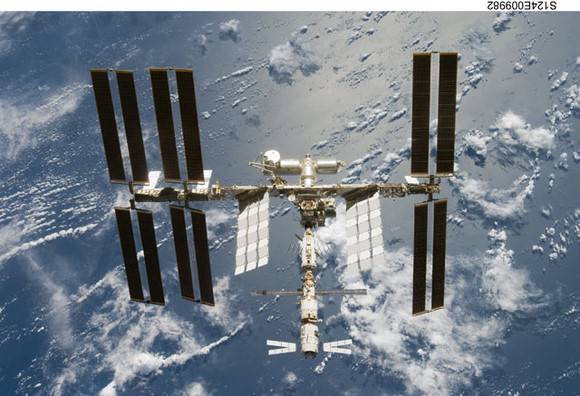It's not the groundbreaking, industry-changing event that the original iPhone was. But the iPhone 3G is a worthy upgrade to Apple's smartphone, and fixes a few flaws that kept many people from buying the first version.
The addition of fast 3G wireless data, GPS and a more flexible, extensible operating system mean the iPhone is now entirely competitive with almost every other smartphone on the market. And its new, lower purchase price will remove the final obstacle to purchase for many people. In short, this phone is about to become very, very popular, as it deserves to be.
Physically, the phone is nearly identical to the previous generation. It measures 2.4 x 4.5 x 0.4 inches, and weighs 4.8 ounces, making it just 0.1 inch wider and 0.3 ounces lighter than the iPhone 1.0. It feels substantially thinner, thanks to tapered edges, which make it sit more comfortably in the hand. Instead of a silver aluminum back, the new iPhone has a plastic backing, available in either glossy black or shiny, iMac white. The screen and 2-megapixel camera are identical to those in the older iPhone, but the external speakers are much improved. Call quality was noticeably clearer in our initial tests.
App Store
The most innovative and compelling feature of the new iPhone has nothing to do with the hardware -- it's a software upgrade. In fact, this upgrade is available for free to current iPhone owners (and as a $10 software upgrade for iPod Touch owners). The App Store contained within the iPhone 2.0 operating system transforms the iPhone/iPod Touch from mere devices into a full-blown platform, massively multiplying their usefulness by providing a wide array of new applications. There are more than 550 apps available in the App Store so far (although more than 100 appear to be public-domain e-books), ranging from useful toys and productivity apps to iPhone games to apps for scientists and science lovers. And Apple has really nailed the customer experience here. Browsing, purchasing and downloading mobile software has never been easier.
Photos: Jonathan Snyder/Wired.com
Fast Data and GPS
One of the biggest shortcomings of the iPhone's first-generation model was its reliance on AT&T's slow EDGE data network. The new 3G data support means that the iPhone can download data 2-3 times faster than the old model. Of course, it still has WiFi support, and based on early reviews, you may want to use WiFi whenever it's possible, because 3G usage will drain the iPhone's batteries quickly.
It's probably not a must-have feature for most users, but the addition of a GPS receiver is a welcome enhancement. The iPhone OS can now use a combination of GPS data and triangulation from WiFi hotspots and cell-tower locations to establish its location. This feature has worked well in our testing so far, and we expect its usefulness to expand as an increasing number of applications start to take advantage of it.
Sign Up and Activation Problems
Thanks in part to heavy demand and insufficient capacity, the phone's launch today did not go smoothly. The iPhone went on sale in dozens of countries worldwide today, and in some cases, there were distribution problems. AT&T's and Apple's servers both suffered from heavy traffic loads, preventing many customers from being able to begin using their phones (greatly irritating some users, and provoking mirth among others). We tried for several hours to activate our iPhone, only succeeding about 2 p.m. Pacific -- five hours after we'd purchased the phone.
The problems seem to have cleared up now, however, and reports suggest that activation is proceeding much more quickly. Part of the activation process must be completed in an Apple or AT&T store, part of it can be done via iTunes. It lacks the innovative simplicity of the original iPhone's hassle-free sign-up process, but on the whole, it's a less onerous sign up than you'll face in most cellphone stores.
Bottom Line
If you already have an iPhone (first generation) or an iPod Touch, this is not a necessary upgrade. Instead, upgrade the operating system via iTunes, and you'll be able to take advantage of the App Store and all the software it contains.
But if you don't have an iPhone, now is a very good time to buy one. The price cut is worth less than Apple's ads would have you believe, since the $200 price ($300 for the 16GB version) is coupled with a two-year cellular service contract. In the U.S., AT&T's iPhone 3G contract will cost $10 more than the old version did ($70 for a package with unlimited data usage and the minimum number of minutes, 450 per month), pretty much erasing any price difference.
But let's put this in context: the handset and service pricing are extremely competitive with other smartphones (including a wide variety of iPhone-like iClones). While the iPhone still has some notable shortcomings -- no replaceable battery, a mere 2 megapixels in the camera, no video recording capabilities -- it is an impressively useful, well-thought-out device, and comes at a reasonable price.
Add in the growing array of software in the iTunes App Store, and you have a device that will get more useful, not less useful, with time. You can't say that about most other phones.
Specs: Apple iPhone 3G
3G wireless data
WiFi
Bluetooth
GPS
2-megapixel camera
iPhone 2.0 OS
3.5-inch multi-touch LCD
320 x 480 pixel display
$200 (8GB) or $300 (16GB), with two-year AT&T contract (prices and carriers will vary in other countries)
apple.com

























 You may feel a little like batman when you get behind the wheel of VW’s upcoming hybrid, but your super power will be in the MPGs. Back in May
You may feel a little like batman when you get behind the wheel of VW’s upcoming hybrid, but your super power will be in the MPGs. Back in May 





 Logan thought this bonus pack of Colgate contained two equally-sized tubes of toothpaste. After all, the boxes are exactly the same size. Yet when he opened the bonus box, he found a smaller box containing a mini tube of toothpaste.
Logan thought this bonus pack of Colgate contained two equally-sized tubes of toothpaste. After all, the boxes are exactly the same size. Yet when he opened the bonus box, he found a smaller box containing a mini tube of toothpaste.










